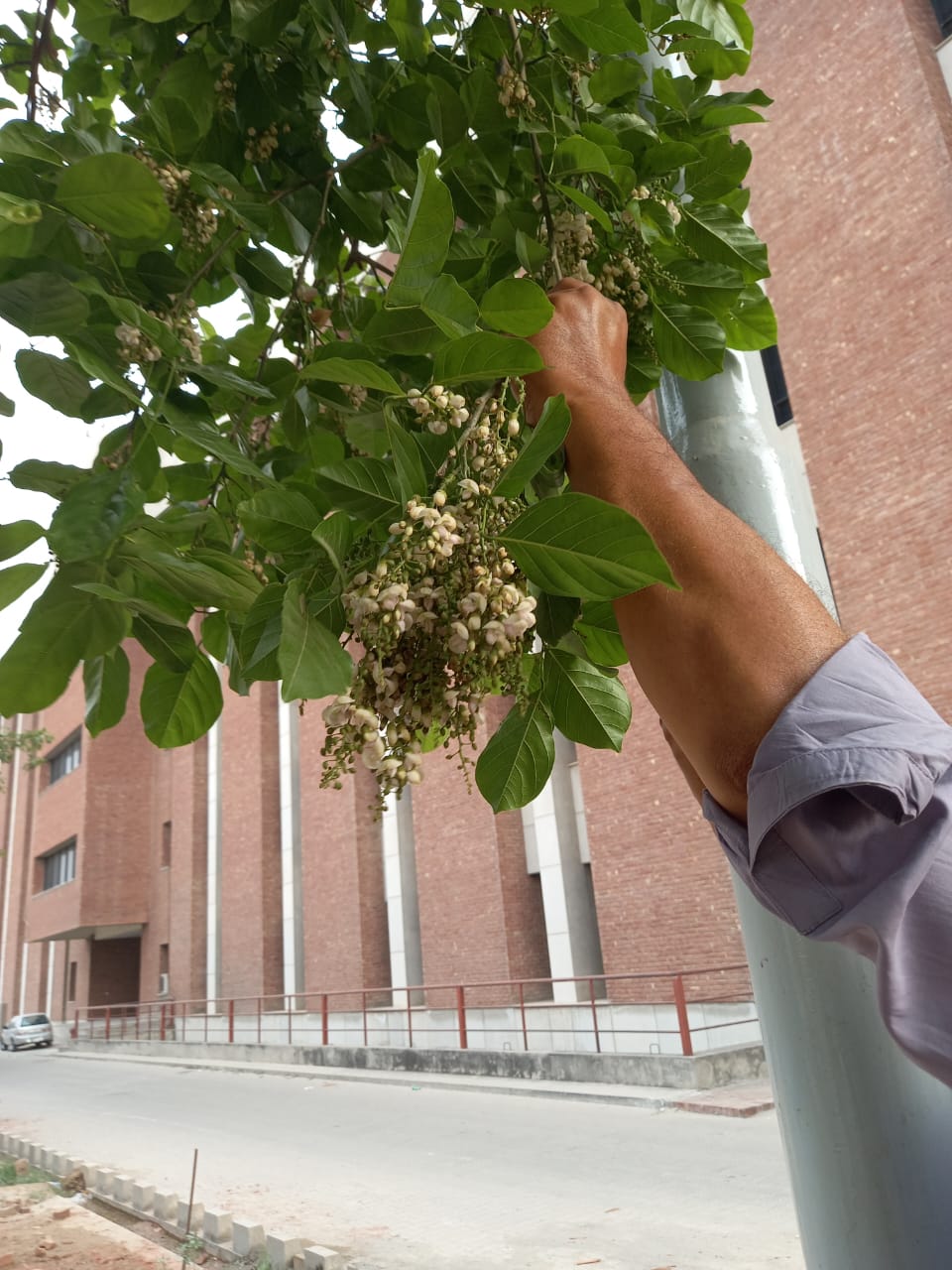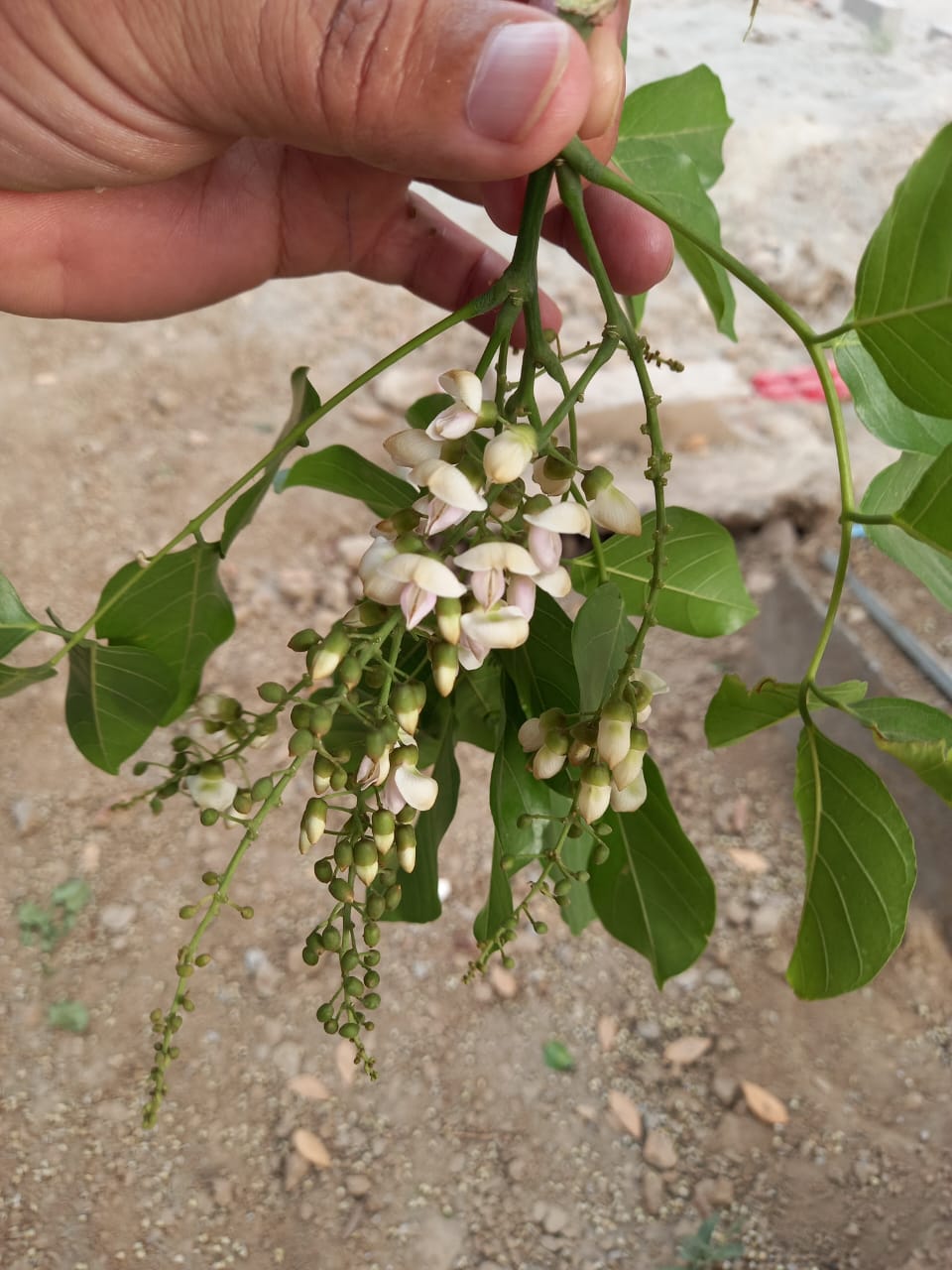Ficus virens
Species
Families
Local Names
Genus
Native/Introduced
DNA Barcode
Description
Ficus virens is a plant of the genus Ficus found in Pakistan, India, Southeast Asia, through Malaysia and into Northern Australia. Its common name is white fig; it is locally known as pilkhan and in the Kunwinjku language it is called manbornde. Like many figs, its fruits are edible. One of the most famous specimens of this tree is the Curtain Fig Tree of the Atherton Tableland, near Cairns, a popular tourist attraction. Another famous example is the Tree of Knowledge in Darwin.Ficus virens var. sublanceolata occurs the subtropical rainforest of northeastern New South Wales, and south eastern Queensland in Australia. DescriptionIt is a medium-sized tree which grows to a height of 24–27 metres (79–89 ft) In dry areas and up to 32 metres (105 ft) tall in wetter areas. It is a fig tree belonging to the group of trees known as strangler figs, which is because its seeds can germinate on other trees and grow to strangle and eventually kill the host tree.It has two marked growth periods in its Indian environment: in spring (February to early May), and in the time of the monsoon rains (i.e. June to early September). The new leaves are a beautiful shade of reddish pink and very pleasing to the eye.This is a very massive tree in which the size of the crown can sometimes exceed the height of the tree.
Use as food
The leaves are known in Thai cuisine as phak lueat (Thai: ผักเลือด). They are eaten boiled as a vegetable in Northern Thai curries, referred to in the Northern dialect as phak hueat. (Moraceae) is a popular medicinal plant in India, which has long been used in Ayurveda, the ancient system of Indian medicine, for various diseases/disorders including diabetes, liver disorders, diarrhea, inflammatory conditions, hemorrhoids, respiratory, and urinary diseases. F. racemosa is pharmacologically studied for various activities including antidiabetic, antipyretic, anti-inflammatory, antitussive, hepatoprotective, and antimicrobial activities. A wide range of phytochemical constituents have been identified and isolated from various parts of F. racemosa. In this review, a comprehensive account of its traditional uses, phytochemical constituents, and pharmacological effects is presented in view of the many recent findings of importance on this plant. The branches have few to many aerial roots.
Fig trees have a unique form of fertilization, each species relying on a single, highly specialized species of wasp that is itself totaly dependant upon that fig species in order to breed. The trees produce three types of flower; male, a long-styled female and a short-styled female flower, often called the gall flower. All three types of flower are contained within the structure we usually think of as the fruit.
The female fig wasp enters a fig and lays its eggs on the short styled female flowers while pollinating the long styled female flowers. Wingless male fig wasps emerge first, inseminate the emerging females and then bore exit tunnels out of the fig for the winged females. Females emerge, collect pollen from the male flowers and fly off in search of figs whose female flowers are receptive. In order to support a population of its pollinator, individuals of a Ficus spp. must flower asynchronously. A population must exceed a critical minimum size to ensure that at any time of the year at least some plants have overlap of emmission and reception of fig wasps. Without this temporal overlap the short-lived pollinator wasps will go locally extinct.
Edible Uses
Young shoots and young leaves - raw or cooked. An acid flavor. They are sometimes used, in the preparation of curries.
Fruit - raw or mixed with fresh raw vegetables. The globose fruits are 12 - 15mm in diameter.
Medicinal
A decoction of the bark is used as an injection in the treatment of leucorrhoea.
Applied externally, a bark decoction is used as a wash on ulcers and as a gargle in salivation.
Agroforestry Uses:
Grown as a shade tree in coffee plantations.
Other Uses
The latex is used for caulking boats and waterproofing. The light-coloured wood is soft and porous. The wood, including the aerial roots, is used locally in light construction, tool making etc. The wood is used for fuel.
Notes










































































































































